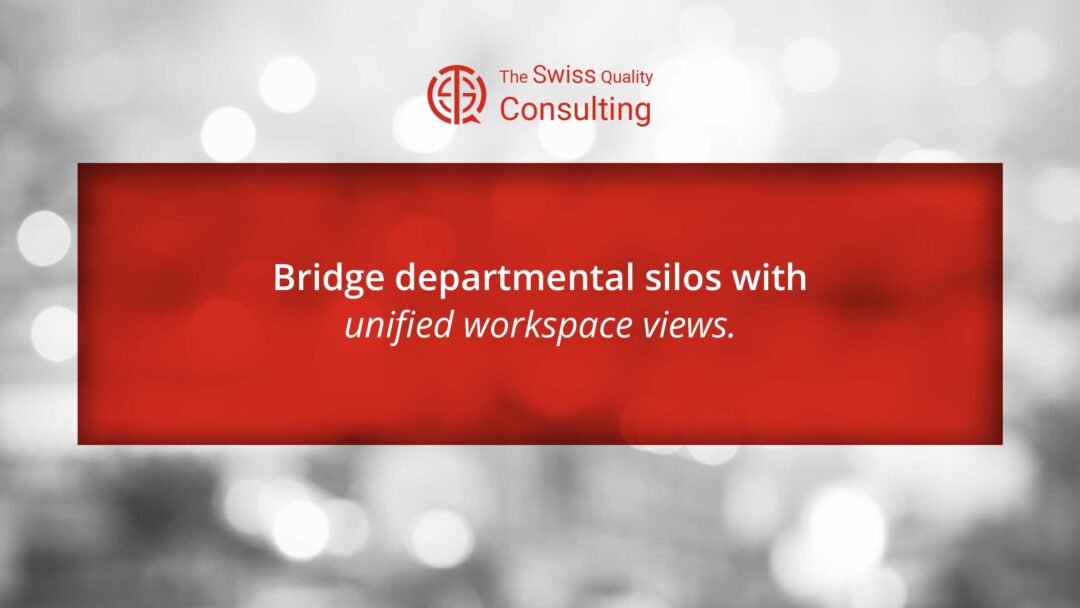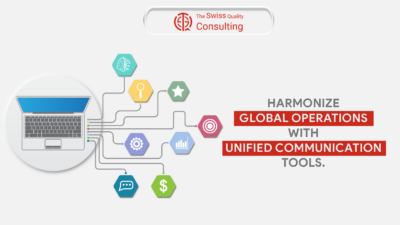Creating Cohesion in Business Operations through Unified Workspaces
Introduction
In today’s dynamic business environment, bridging departmental silos with unified workspace views is a critical strategy for fostering organizational collaboration and efficiency. This article aims to provide business executives, mid-level managers, and entrepreneurs with insights into the importance and implementation of unified workspace views to enhance cross-departmental communication and productivity.
The Challenge of Departmental Silos in Organizations
Departmental silos, the rigid division of work into isolated units, can act as roadblocks to communication, collaboration, and overall organizational success. These segregated working environments often result in a lack of information sharing, hindered problem-solving, and an inability to leverage the collective expertise of the entire workforce.
The entrenched boundaries of departmental silos often create a culture of information hoarding, where individuals and teams guard their knowledge and expertise, limiting the flow of insights across the organization. This lack of transparency hinders effective decision-making, as crucial information remains siloed within departments, preventing a holistic understanding of the organization’s challenges and opportunities.
Silos also impede collaboration and hinder the ability to address cross-functional issues. When problems arise, individuals are limited to the knowledge and resources within their own department, often leading to suboptimal solutions and delayed resolutions. Breaking down silos requires a shift in mindset, encouraging individuals to share information, collaborate across teams, and leverage the collective expertise of the organization.
To break down these barriers, businesses must foster a culture of open communication, encourage cross-functional collaboration, and implement initiatives that break down departmental boundaries. These efforts may include:
Establishing cross-functional teams: Bringing together individuals from different departments to collaborate on shared projects can break down silos and foster a sense of shared ownership.
Implementing knowledge sharing platforms: A centralized repository for knowledge and resources can facilitate information sharing and collaboration across departments.
Promoting leadership development: Encouraging leaders to champion cross-functional collaboration and break down silos is crucial for creating a cohesive organizational culture.
Recognizing and rewarding collaboration: Celebrating successful cross-functional initiatives and recognizing individual contributions can reinforce a culture of collaboration and break down silos.
Implementing technology solutions: Utilizing technology tools that integrate data and processes across departments can streamline communication and collaboration efforts.
By breaking down departmental silos, businesses can create a more cohesive and efficient work environment, where communication flourishes, collaboration is the norm, and innovation flourishes. This interconnectedness empowers organizations to achieve their strategic goals, gain a competitive edge, and ultimately, drive sustainable success.
Improving Efficiency and Collaboration
Unified workspace views enable seamless information flow and collaboration across different departments, significantly improving operational efficiency and team dynamics.
Role in Change Management
Implementing unified workspace views is an integral part of change management, as it involves a shift from compartmentalized to integrated working methods. This transition requires strategic planning and a holistic approach to organizational change.
Strategies for Effective Integration
Effective integration of unified workspace views demands a comprehensive understanding of the existing departmental workflows and a tailored approach to ensure smooth adoption.
Impact on Executive Coaching and Leadership
Leadership plays a pivotal role in effectively bridging departmental silos. Executive coaching services now emphasize the importance of leading through such transitions, including fostering a culture of collaboration and open communication.
Leading with a Collaborative Approach
Through executive coaching, leaders learn to manage the challenges of integrating unified workspace views, thus ensuring a more interconnected and collaborative organizational culture.
Effective Communication in Implementing Unified Workspaces
Clear and effective communication is essential in the process of implementing unified workspace views. It ensures that all team members are on the same page, understand the benefits, and are engaged in the transition process.
Aligning Teams with Organizational Goals
Effective communication helps in aligning teams with the organizational goals of improved collaboration and operational efficiency facilitated by unified workspace views.
Generative AI in Enhancing Workspace Integration
Generative Artificial Intelligence (AI) can significantly enhance the implementation of unified workspace views. AI technologies can analyze workflow patterns, optimize information sharing, and predict potential operational challenges.
Leveraging AI for Smoother Workspace Integration
Generative AI introduces advanced capabilities, making the integration of unified workspace views more efficient and tailored to specific organizational needs.
Conclusion Bridging Departmental Silos with Unified Workspace Views
In conclusion, bridging departmental silos with unified workspace views is essential for businesses seeking to enhance internal collaboration and operational efficiency. By strategically implementing these unified systems and leveraging technologies like AI, organizations can break down communication barriers, foster a collaborative culture, and drive business success.
#UnifiedWorkspace, #OrganizationalCollaboration, #DepartmentalSilos, #BusinessEfficiency, #AIIntegration






















